Would you as well want to take some green steps before this year's Christmas celebrations? "Sustainability-Mari" will help us get started!
Turn off the autopilot!
It's more important than ever to take a green approach to Christmas. However, the most important thing is to think about what we do on the other 355 days of the year, because Christmas should still be about fun and traditions. BUT there are some adjustments we Christmas-celebrating people should make:
– We need to turn off the autopilot during Christmas. Plan ahead, choose quality and make good choices even if you're standing in the middle of a glittering, hot mall with plastic up to your neck. We are hugely influenced by advertising and social media to want to replace and renew every year. It creates an accelerating use-and-throw away society, and an overconsumption our planet cannot tolerate. Stop up in the store and consider that everything we buy costs the planet something, says Mari Evje Øren, Head of Sustainability at SSN.
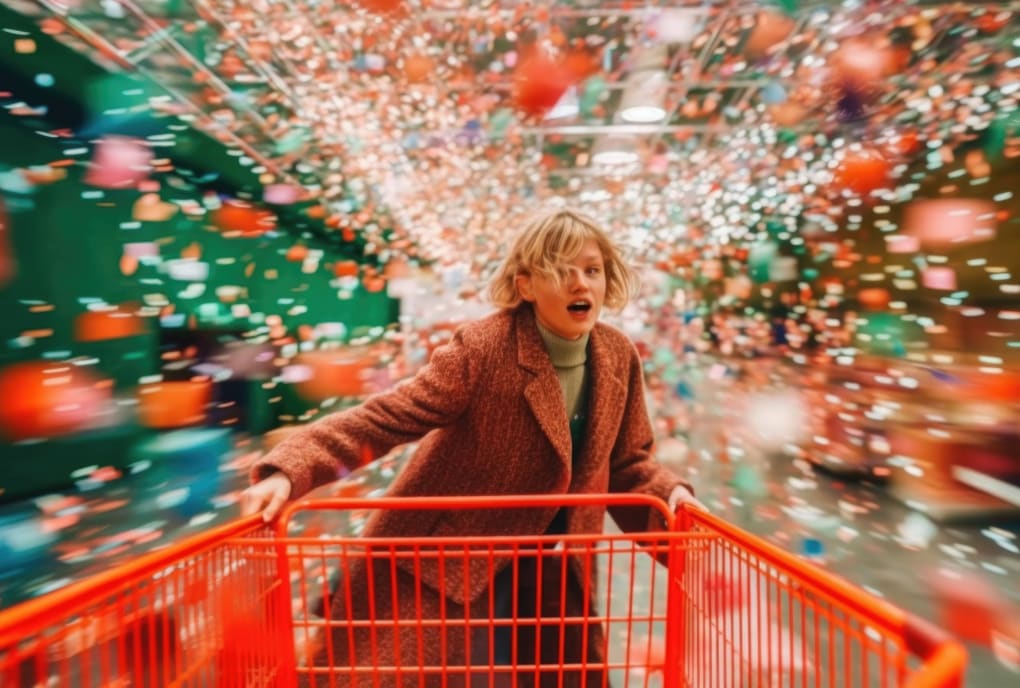
Have a plan before you go Christmas shopping and stick to it! If you feel like you're getting carried away, stop and think 🌍
Specific advice for making better and greener choices this Christmas
It can feel overwhelming and perhaps difficult to know where to start. Many people report that they feel it's already "too late" and that it's no use. But it does if everyone contributes a little! Here is Sustainability-Mari's specific advice for those who want to create a greener Christmas:
🎄The Christmas tree - choose real wood and as local as possible
In summary, real Christmas trees win out over plastic trees.
Studies show that a plastic Christmas tree requires around ten times more greenhouse gas emissions in production than a real tree from nature. So we can say that if you keep the plastic tree for about ten years, you have brought in the natural tree. Remember, a plastic tree is just that: plastic. We have a huge problem with stray microplastics. Even plastic trees are not free of sprinkles - they can sprinkle microplastics.
Your best bet is to cut down a tree yourself near where you live (with permission from the landowner).
The next best thing is to choose a real tree from a local farm. Remember to recycle the tree!
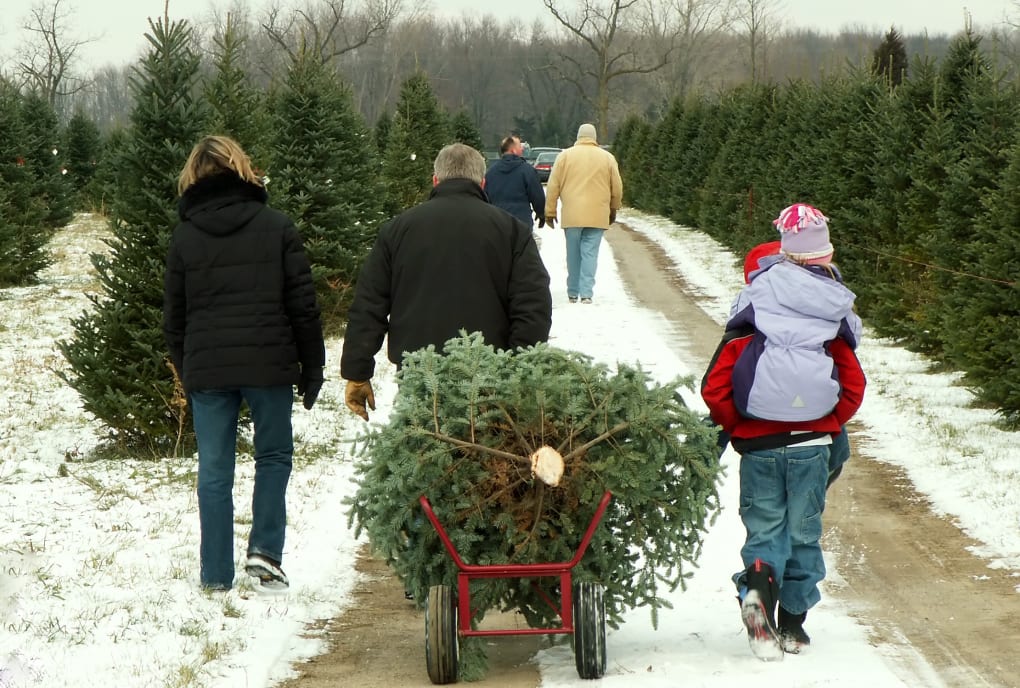
There are plenty of local Christmas tree farmers who offer to cut your own tree (for payment). By cutting our own trees, we don't end up with too many trees (which end up as trash) and we minimize transportation. Plus, it's really cozy!
🎄Why does the wood have to be so local?
Real trees also impact the environment by being transported, fertilized and/or sprayed. Norway is probably the country in the world that uses the least amount of pesticides and fertilizers in Christmas tree production, so make sure you buy a Norwegian tree - and preferably bring it home from the harvest on a sledge (no, you can of course use an electric car!).
🎁 Gifts
Eco-friendly gifts can be vouchers for services, things you have had but no longer need, cultural experiences, gift cards, tickets, memberships - get great tips in this list of 30 green Christmas gift tips from Klimapilotene.
If you're buying a gift - always ask for a wish list. Always think about quality and longevity!
Remember to bring your totebags for Christmas shopping!
🎁 Choose eco-friendly wrapping paper
Every Christmas, the gift wrap we use in Norway can be wrapped one and a half times around the globe.
Gift wrap is a typical disposable product that generates large amounts of waste. It has poor paper quality and contains many substances and little fiber, which means that it cannot be recycled as paper, but must be sorted as residual waste (which is burned).
The best thing is to use something you already have. For example, old newspapers or other paper, a cloth bag or a gift bag that can be used several times. You can also make gift bags from textiles you have lying around. This can be a fun pre-Christmas activity and the bags can be reused many times.
Gift ribbons and gift decorations are often made of plastic. Instead, choose natural materials such as twine as a more environmentally friendly alternative.
If you still want to buy gift wrap paper, gray paper is much better than regular gift wrap and can be recycled as paper waste.
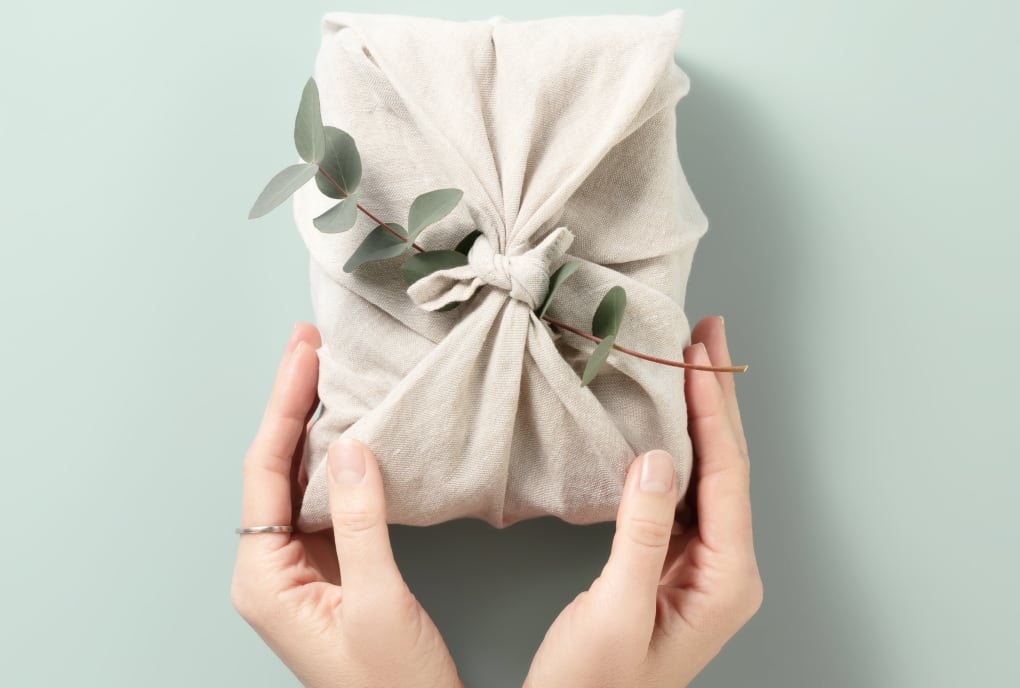

The wrapping paper we use for Christmas in Norway reaches one and a half times around the globe... Choose eco-friendly alternatives such as textiles or gray paper and twine.
Everyone loves homemade Christmas treats. Try our recipe for Rocky Road!
👔 Clothes
Wear your Christmas/New Year outfit from last year, borrow from friends (how about organizing a borrow/exchange evening with mulled wine and Christmas cookies before Christmas?), buy second-hand on Tise.com, finn.no or in your local second-hand store, or rent an outfit! There are lots of party clothes for rent on finn.no, or check out Hygglo, a service where you can both rent and hire out clothes and equipment.
Christmas sweaters can be an environmental disaster
Many Christmas sweaters consist of plastic, batteries and electronics. Clothes with plastic prints, glitter prints and sequins come loose during use and washing, and thus contribute to pollution. Moreover, most Christmas sweaters are made of polyester and acrylic - materials derived from plastic and oil. Such Christmas sweaters definitely spread humor and joy, but are truly environmental villains.
All electronics contain metals, and effects such as lights require the use of heavy metals. We should reserve this type of metal for where we "really" need it, and not as unnecessary decoration on a sweater, which also contributes to it not being washable.
We need to think much more about longevity, useful life and the repair and maintenance of our things, and a flashing Christmas sweater is the opposite of all that.
Christmas sweater with a clear conscience
Of course you can have a Christmas sweater without flashing lights! For example, choose a good quality cotton sweater without plastic prints that you know you'll enjoy pulling out year after year, or get out your knitting needles and make a sweater yourself (or ask a knitting-savvy friend or family member to knit you a Christmas sweater).

Christmas sweaters are not forbidden! But choose one without lights, batteries and glitter, that is machine washable and can be reused for many years.
🐖 Christmas food
If you're eating rib steak, choose pork that has had a good life. Meat stamped with the Animal Protection Mark gives you the assurance that the animal has had a life worth living. Yes, it costs more, but tastes better in every way. Be aware that eco-certification does not necessarily mean that the animals have had a good life.
The Animal Protection Alliance has created a product guide on food with meat, eggs and dairy products where you can easily find out which brands/producers deliver on animal welfare.
Take a meat-free day this Christmas. There are so many great recipes for meat-free festive food!
Plan a Christmas meal with wild-caught fish (i.e. not farmed).
Plan your food shopping! And plan for leftover dinners.
Sort your waste ALSO on Christmas Eve.
Facts on Norwegian pig farming:
99 percent of Norwegian pigs are never outside.
Almost all pigs in Norway live on concrete.
Every year, 1.6 million pigs are slaughtered at Norwegian slaughterhouses.
Most are slaughtered when they are 5-6 months old. Naturally, pigs live for about 10 years.
Over 20% of pigs die on the farm.
Norwegian pig production is becoming more and more industrialized.
Read more about pigs at Dyrevernalliansen's website (Norwegian).
⭐️ Christmas decorations
Do you have to buy pine cones with glitter on them in the store? Or artificial spruce garlands? Why not take a plastic-free trip to the forest instead, where you can find the real thing for free?
Old Christmas baubles are beautiful and thrift stores often have a good selection of Christmas decorations - go on a treasure hunt and find something that no one else has and save the earth at the same time!
Reuse the Christmas decorations you already have, combine them with items from nature and things you can make yourself.
Before you buy anything new: Think about whether you really want and need this item, consider the quality and whether it's something you can bring out and enjoy year after year.
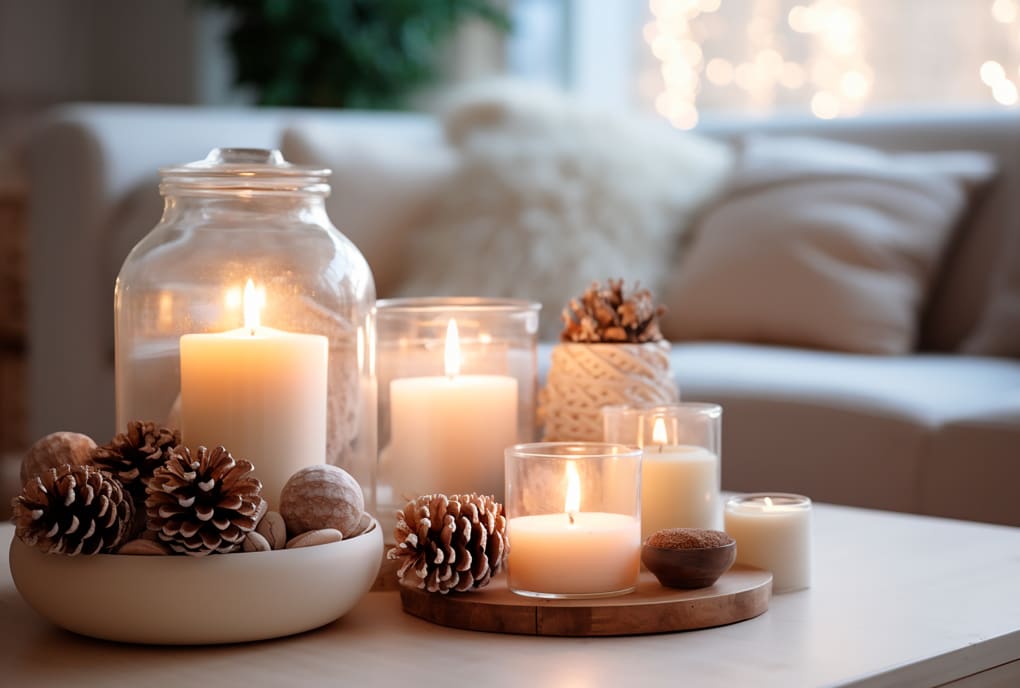
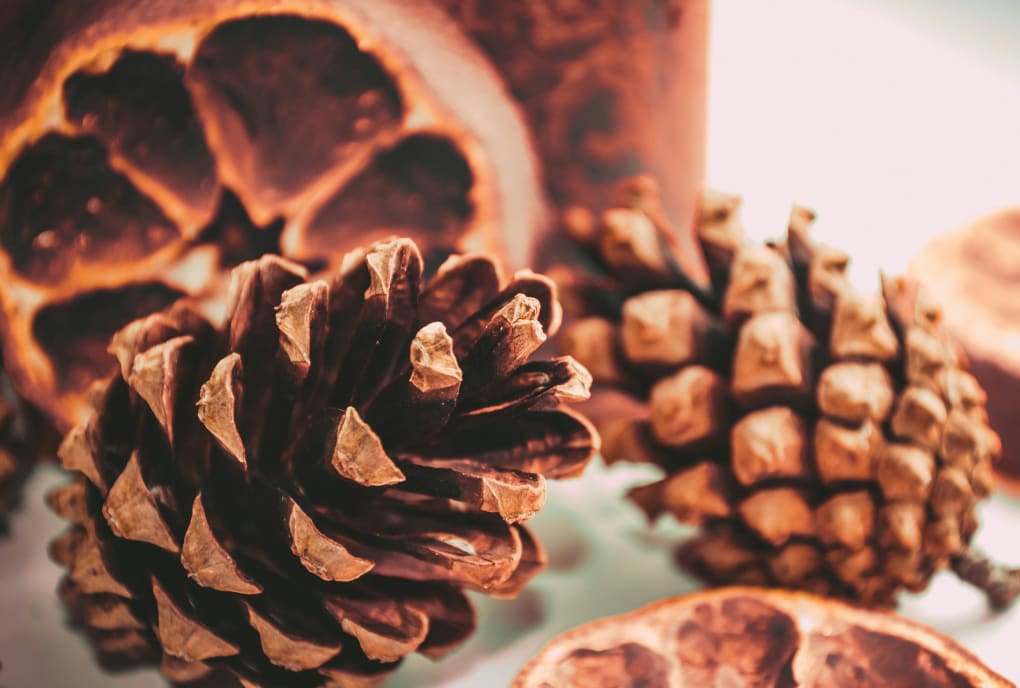
Bring the Christmas spirit to your living room in no time: Take a walk in the woods and pick pine cones for free. Place them in a dish or bowl and light candles. But skip the glitter!
Glitter = microplastics
Steer clear of glitter when you're planning a Christmas workshop or buying new or old Christmas decorations. Glitter IS small particles of microplastic, and we all know how glitter spreads and is almost impossible to remove! Microplastics are very difficult to break down.
From October 17, 2023, loose glitter is banned by the EU. More products containing microplastics will be banned in the near future.







